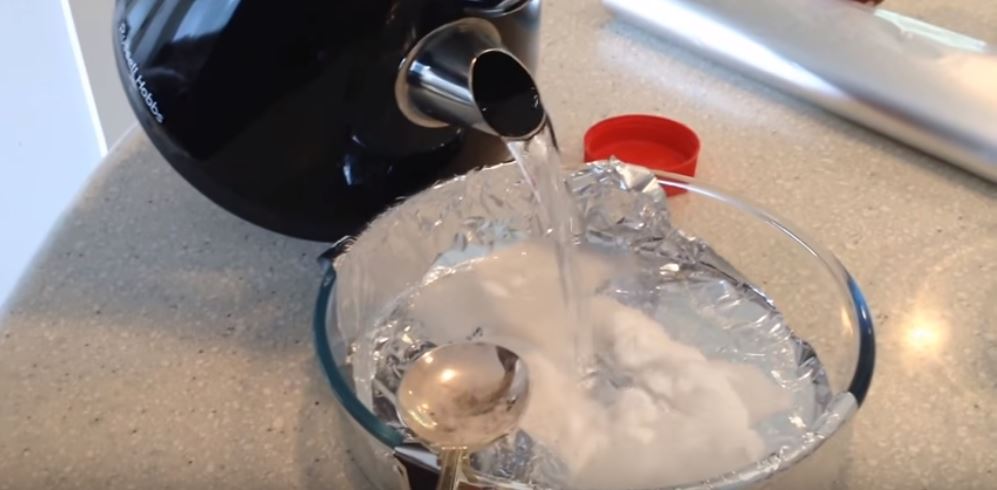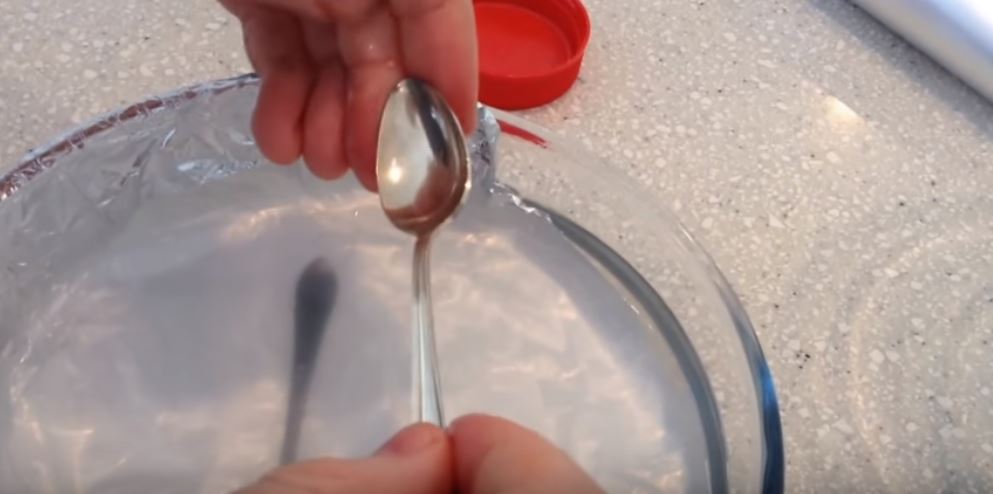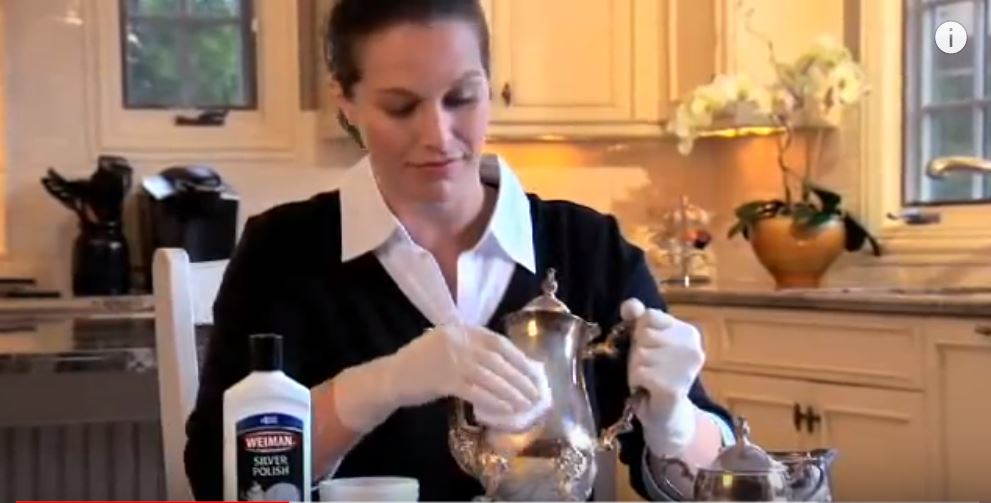How to Clean Silver and Remove Tarnish for Good

sorendls/iStock
It may sound intimidating, but trust us: This is one project you can handle yourself—no need to call in the pros. And when it comes to the efficacy of those odd “miracle” methods you may have heard about—using ketchup or toothpaste to polish silver—it’s best to just steer clear. “Anything found in your pantry, such as ketchup, is too acidic, and toothpaste is too abrasive,” says Kelly Juhasz, principal at Fine Art Appraisal and Services.
The following methods for cleaning silver are reliable, tried-and-true ways to remove tarnish fast and polish your pieces back to their former glory.
Know your silver
Before the washing begins, determine what kind of silver you have. There are generally two kinds of silver objects. If they are silver-plated, a thin layer of silver has been bonded to a base metal, usually made of a brass, copper, or nickel alloy. Sterling silver, on the other hand, is at least 92.5% solid silver, and is significantly more valuable. It also lasts much longer. But sterling silver is also much softer than silver plate, says Grace Torbeck, a content editor specializing in silver and art at the online estate marketplace Everything but the House. The cleaning method you choose may depend on what kind of silver you have.
Cleaning silver with dish soap
This method is extremely simple: Wash your silver by hand with gentle dish soap and water after every use.
“If you clean your silver plate or sterling [articles] in the sink by hand, with gentle dish soap, over time, you will notice they become brighter,” says antiques dealer and appraiser Charles Snider.
Be sure you dry your silver with a soft, lint-free cotton cloth, immediately after washing. Wear cotton gloves while handling clean silver, says Juhasz. This is important while drying and buffing, because “the acid from your fingers can leave marks and damage the surface,” she says.
How to remove tarnish with baking soda, foil, and hot water
It might seem more like magic than a simple cleaning hack, but this this method will dissolve tarnish before your eyes.
Start with freshly hand-washed silver. In a foil-lined pan (or a pan made of foil) dissolve a tablespoon of baking soda with a cup of boiling water.
 Fill a foil-lined container with baking soda dissolved in boiling water
Fill a foil-lined container with baking soda dissolved in boiling waterNZ Coins/YouTube
—————
Immerse your silver in the bath for a minute or two, until you see the tarnish lift.
 Immerse your silver in the bath.
Immerse your silver in the bath.NC Coins/YouTube
—————
Remove the silver, and voilà, it’s cleaned and tarnish-free. Dry and polish your pieces immediately.
 Remove when the tarnish has lifted.
Remove when the tarnish has lifted.NC Coins/YouTube
—————
You may need to repeat for heavily tarnished items. Some people will add half a cup of vinegar or salt to this solution, to speed up the process, but do so only if necessary; you risk causing etches to your silver. Torbeck urges caution with this method, because you risk scratching your silver on the foil. This method can also remove a tiny amount of the silver from silver-plated objects.
Stay away from the dishwasher
One place you never want to clean your silver is the dishwasher. Every expert we spoke to agrees that the heat and dishwashing soap will be too tough on silver plate or sterling silver.
How to polish silver
After you’ve gone through the trouble of cleaning your silver, experts recommend using a high-quality polish. “The damage that can be done to your antique sterling or silver plate can not be reversed or fixed,” says Snider. “No quick fix or cheap solution is worth the risk of damaging your silver.” Some of the best silver-polish brands are Weiman, Hagerty, Goddards, and Silvo.
Polish with a soft cotton or chamois leather cloth. For hard-to-reach areas, you can use soft, small brushes. You’ll also want to wear cotton gloves, to keep your hands clean.
Apply polish to a cloth and rub it on the piece in a circular motion.
 Apply silver polish in a circular motion.
Apply silver polish in a circular motion.Weiman Products/YouTube
Buff the piece with a clean cloth. And that’s it!
 Buff with a separate, clean cloth.
Buff with a separate, clean cloth.Weiman Products/YouTube
How often should you polish silver?
It’s recommended that you polish silver after every single use. While that may sound excessive, once silver is tarnished, you’ll spend more time and elbow grease to clean and polish it.
That said, you don’t want to polish the silver with a chemical agent every time. Torbeck says silver polish can wear away the surface over time. So if you see no signs of tarnish, not even a little yellowing, simply wash, and then dry and buff with a lint-free cloth.
Storing silver
The key to preserving your silver is to keep it dry. So for starters, do not keep your silver in your damp basement, Kohl says. Once you’ve cleaned and buffed your silver, wrap each piece in flannel or cotton. “Don’t use Ziploc bags, which trap moisture,” she warns. And definitely don’t use cling film. The little wrinkles that form in the film trap moisture and create veins of tarnish.
To keep moisture out, Kohl recommends storing your silver with either silica gel packets or calcium carbonate chalk (like the stuff you see at the gym).
Perhaps the best thing you can do for your silver is to let it breathe. Live a little, and bring it out for everyday use. Regular use and care will keep your silver from accumulating the kind of tarnish that makes it a chore to clean. “If you use it every day, and you touch it every day, it’s easier to keep in good condition,” says Kohl.
The post How to Clean Silver and Remove Tarnish for Good appeared first on Real Estate News & Insights | realtor.com®.

